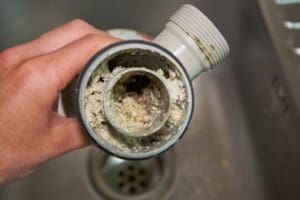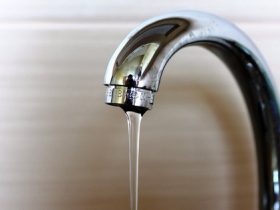Straightforward Procedures to Enhance Low Water Pressure in Your Home
Straightforward Procedures to Enhance Low Water Pressure in Your Home
Blog Article
We've encountered this post about Low Water Pressure in the House? listed below on the web and concluded it made sense to share it with you on this page.

Low tide pressure in your home can be an irritating problem, affecting whatever from bathing to cleaning recipes. If you're experiencing weak water flow, there are a number of feasible causes and options to check out. In this overview, we'll review typical reasons for low tide pressure and functional actions to deal with the problem efficiently.
Introduction to Low Water Stress
Low water stress occurs when the circulation of water from your faucets, showers, and other components is weaker than typical. This can make everyday tasks much more difficult and much less effective. Understanding the sources of low water stress is crucial to locating the best remedy.
Typical Causes of Low Water Stress
Faulty Pressure Regulators
Stress regulators are accountable for maintaining constant water stress in your house. If they malfunction, it can lead to low water pressure or uneven flow throughout the house.
Municipal Supply Of Water Issues
Occasionally, the issue exists outside your home. Local water supply issues, such as main line leaks or maintenance job, can briefly reduce water stress in your location.
Pipeline Obstructions
Gradually, pipelines can become obstructed with natural resource, debris, or debris, limiting the flow of water. This is a common problem in older homes with galvanized steel pipelines.
Corrosion
Deterioration within pipelines can cause leaks and minimized water stress. Corrosion build-up can constrict water circulation, especially in aging plumbing systems.
How to Detect Low Tide Stress
Evaluating Pipelines
Inspect noticeable pipes for signs of leakages, corrosion, or clogs. Pay attention to any kind of unusual noises, such as banging or rattling pipelines, which might show problems within the plumbing system.
Consulting with a Plumber
If you're unable to pinpoint the cause of low water pressure, take into consideration working with a professional plumber to conduct an extensive assessment. They can determine underlying problems and advise ideal solutions.
Checking Taps and Components
Begin by checking the water pressure at different faucets and fixtures throughout your home. If the issue is isolated to certain areas, it might show local issues.
DIY Solutions to Fix Low Water Pressure
Flushing Hot Water Heater
Sediment buildup in the water heater can limit flow and reduce performance. Flushing the container regularly helps eliminate sediment and maintain optimal performance.
Checking Pressure Regulatory Authority
Make certain that the stress regulatory authority is functioning appropriately. Changing or changing the regulatory authority can help bring back appropriate water stress throughout your home.
Cleaning Up Aerators and Showerheads
Mineral deposits can collect in aerators and showerheads, minimizing water flow. Get rid of and clean these elements frequently to improve water pressure.
Cleaning Clogs in Pipeline
For small clogs, attempt using a plumbing serpent or chemical drainpipe cleaner to clear obstructions in pipes. Beware when utilizing chemicals and comply with safety guidelines.
When to Call a Professional Plumber
If DIY initiatives fall short to deal with the concern or if you believe significant plumbing issues, it's finest to seek assistance from an accredited plumber. They have the expertise and tools to deal with complicated problems safely and successfully.
Safety Nets to Keep Water Pressure
Installing a Stress Booster
Think about mounting a pressure booster pump to boost water pressure in locations with consistently reduced flow. This can be especially useful for multi-story homes or properties with high-demand components.
Tracking Water Use
Be mindful of water use practices and prevent overtaxing the plumbing system. Basic changes, such as shocking showers and washing tons, can assist keep ample water pressure.
Normal Maintenance
Arrange regular maintenance for your plumbing system to avoid issues such as rust, leaks, and blockages. Addressing minor issues early can assist stay clear of even more substantial repair services later on.
Conclusion
Managing low tide stress can be frustrating, yet determining the underlying causes and implementing ideal options can restore optimum flow throughout your home. Whether it's cleansing aerators, examining pipes, or speaking with a plumber, taking aggressive steps can guarantee a constant supply of water for your daily needs.
How to Fix Low Water Pressure In Your Home
Municipal Water Supply Issues
Scheduled maintenance, high demand, and water main breaks are all potential causes for low water pressure within a city or county’s water lines. While there’s not much you can do to personally fix a problem with your city or county’s water supply system, you can play a big role in documenting the issue and alerting those who can.
How to fix it:
Ask your neighbors if they are experiencing any issues with low water pressure. If multiple homes are affected, it’s likely related to the city’s water line. Contact the local Water Authority to see if there is any maintenance taking place that might be affecting your supply. Also let them know of your specific issues. If other homeowners report the same issues, they’ll know that there could be a larger issue to look into. Faulty Fixtures
A damaged or clogged shower head, faucet or appliance is the first thing we’d suggest checking, especially if low water pressure appears to be isolated to a specific area of your home.
How to fix it:
First, turn off the main water supply to your home. Check the affected appliances for build-up or debris. In the case of a faucet, you can simply unscrew the aerator at the tip of the faucet. Showerheads should be fully detached from the water pipe. While the appliances are detached, you may want to check the water supply to determine if the fixtures were in fact the issue. To clean, soak the showerhead or aerator in vinegar and brush off any visible debris. Reattach the fixtures and check the water pressure again. If it is still low, there is likely a deeper issue at hand, which can be determined by a professional plumber. Pipe Obstructions
Mineral deposits, rust or other debris within water pipes can lead to blockages or corrosion over time.
How to fix it:
When you think of a clog, you probably think of a drain clog. While there are many DIY solutions to clearing a drain, clogs in a water pipe will almost always require the help of a professional plumber. A plumber will be able to locate the affected pipe and clean out any debris or mineral deposit buildup. In severe cases, the pipe may need to be replaced. Your plumber might also recommend a water softening system to remove the minerals from your home’s water supply that can contribute to pipe blockages over time.
Plumbing Leak
Undetected water line leaks can divert water away from your residential pipes, reducing the water pressure in your fixtures.
How to fix it:
Check your water meter by turning off all water sources and monitoring the meter for any movement, which could be a clear indicator of a potential leak. Check all visible pipes for signs of leaking, including water stains, active dripping or damp spots around the pipe. Inspect fixtures, including faucets and showerheads, for any drips. Test the pressure but recording the pressure with the main water valve shut off. Leave off for a few hours and test again. A significant drop in pressure is a clear sign of a leak. https://kiddcoplumbing.com/plumbing-blog/how-to-fix-low-water-pressure/

We were shown that report on Low Water Pressure in the House? from a friend on our other web property. Please take the opportunity to distribute this write-up if you appreciated it. Bless you for your time. Don't forget to come visit our blog back soon.
Try Here Report this page